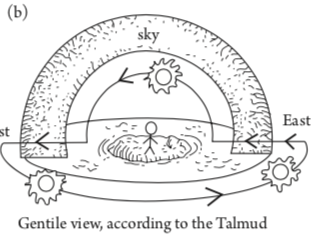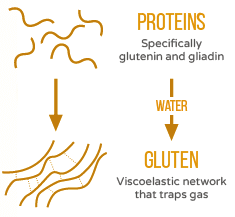The New York Times, Nov 10,2020
Last month, a group of hikers in America’s beautiful Yellowstone National Park were banned from the park for two years, sentenced to two years’ probation, and fined between $500 and $1,200. Their crime? Cooking chickens in the park’s famous hot springs. As reported in The New York Times, it is illegal to go off the boardwalk or designated trails and to touch or throw objects into hot springs or other hydrothermal features at the park. It’s also dangerous. “The water in the park’s hydrothermal systems can exceed 400 degrees Fahrenheit and can cause severe or fatal burns,” said a park spokeswoman. But had the hikers done this on a Saturday, at least they would not have broken any laws that prohibit cooking on Shabbat. We learn this in today’s page of Talmud.
פסחים מא, א
אָמַר רַב חִסְדָּא: הַמְבַשֵּׁל בְּחַמֵּי טְבֶרְיָא בְּשַׁבָּת — פָּטוּר. פֶּסַח שֶׁבִּשְּׁלוֹ בְּחַמֵּי טְבֶרְיָא — חַיָּיב
Rav Chisda said: One who cooks food in the hot springs of Tiberias on Shabbat is exempt. One violates the Shabbat prohibition of cooking only if he uses a fire. In the case of a Paschal lamb that was cooked, i.e., boiled, in the hot springs of Tiberius, one is liable for boiling the offering [for it may only be eaten roasted over a fire].
Rav Chisda’s ruling is based on the simple premise that the kind of cooking that is forbidden on Shabbat is that which involves fire. If you cook by another means, like for example, the sun’s heat, then there is no Sabbath violation. And according to the sages of the Talmud, the hot springs of Tiberius (and Yellowstone too, I presume) are heated by the sun. Hence there is no prohibition against cooking in hot springs on Shabbat. But before gently lowering your chicken into the waters, check with a park ranger first.
How The Sun heats the Hot Springs
How does the sun manage to heat up the waters of the hot springs on Tiberius? Here is Rashi’s explanation:
רשי ד׳ה שלנו פסחים מב,א
בימות הגשמים חמה מהלכת בשיפולו של רקיע לפיכך כל העולם צונן ומעיינות חמין
…During the winter the sun is low in the sky. This is the reason that it gets cold, but the springs are warm…
The idea is this: as the sun travels low in the sky during the winter it cannot provide warmth. But it manages to heat up the springs because of its path at night, when it travels under the earth. This is made explicit in a famous passage later in this tractate:
פסחים צד,ב
חַכְמֵי יִשְׂרָאֵל אוֹמְרִים בַּיּוֹם חַמָּה מְהַלֶּכֶת לְמַטָּה מִן הָרָקִיעַ וּבַלַּיְלָה לְמַעְלָה מִן הָרָקִיעַ וְחַכְמֵי אוּמּוֹת הָעוֹלָם אוֹמְרִים בַּיּוֹם חַמָּה מְהַלֶּכֶת לְמַטָּה מִן הָרָקִיעַ וּבַלַּיְלָה לְמַטָּה מִן הַקַּרְקַע אָמַר רַבִּי וְנִרְאִין דִּבְרֵיהֶן מִדְּבָרֵינוּ שֶׁבַּיּוֹם מַעֲיָנוֹת צוֹנְנִין וּבַלַּיְלָה רוֹתְחִין
The Jewish Sages say that during the day the sun travels beneath the firmament and is therefore visible, and at night it travels above the firmament. And the sages of the nations of the world say that during the day the sun travels beneath the firmament, and at night it travels beneath the earth and around to the other side of the world. Rabbi Yehuda HaNasi said: And the statement of the sages of the nations of the world appears to be more accurate than our statement. A proof to this is that during the day, springs that originate deep in the ground are cold, and during the night they are hot compared to the air temperature [which supports the theory that these springs are warmed by the sun as it travels beneath the earth].
(To read more Talmudology on the orbit of the sun click here.)
Why do lakes seem warm at night?
According to the great editor of the Mishnah Rabbi Yehuda HaNasi, at night the water in lakes feels warmer than the surrounding cool air. His explanation (which was not really his, but that of the “sages of the nations of the world”) was that the sun was actually warming the water as it passed underneath on its nightly path under the flat earth, much like your stove heats a pot of water from the underneath.
What is really going on
The phenomena that Rabbi Yehudah HaNasi described, in which a body of water feels warmer at night (when compared with the surrounding cool night air) than it did during the day, is due to a property we now call specific heat or heat capacity. Because the heat capacity of water is about four times that of air, water takes longer to heat up but also longer to cool down than does the surrounding air; as a result, when compared to the cooler night air, the water feels comparatively warmer at night than it did during the day. This is also the reason that the weather in coastal areas is generally milder than areas more inland; the ocean traps the sun’s heat and slowly releases it, preventing large fluctuations in temperature. All this was not known to Rabbi Yehudah HaNasi (or anybody else back then) and he came up with another explanation entirely.
Don’t touch that water!
The theory that the sun slips underneath the earth each night and warms up spring water has halakhic ramifications to this day. Since spring water (and not just hot spring water) was thought to be warm, it could not be used in the process of baking matzah for Passover. Its warmth would speed up the process of leavening and turn the matztot into forbidden bread. And so we read in tomorrow’s page of Talmud (Pesachim 42a)
אָמַר רַב יְהוּדָה: אִשָּׁה לֹא תָּלוּשׁ אֶלָּא בְּמַיִם שֶׁלָּנוּ
Rav Yehuda said: A woman may knead matza dough only with water that rested, i.e., water that was left indoors overnight to cool.
If water is added to dough immediately after it was drawn from a well or spring, when it is still lukewarm, the dough will leaven at a faster rate. The German Rabbi Jacob Moellin (1365–1427) ruled that water used to make matzot must be drawn immediately after sunset, because after this time the sun warms the water as it passes beneath the earth (Sefer Maharil 6b). This opinion was codified in the Shulhan Arukh, the Code of Jewish Law written by Joseph Caro in the sixteenth century.
שולחן ארוך אורח חיים 455:1
אין לשין אלא במים שלנו בין שהם מי בורות ומעיינות בין שהם מי נהרות ושואבים אותם מבעוד יום (סמוך לבין השמשות) (ד"ע והגהות מיימוני פ"ה) או בין השמשות ואין לשין בהן עד שיעבור הלילה כולה ויכולים לשאוב יום אחד לימים הרבה ואם הזמן חם יניחם במרתף שהוא קר ואם הזמן קר יניחם באויר כי המרתף הוא חם וצריך להשכים ולהכניסם לבית קודם שיזרח השמש ואפילו ביום המעונן
One may only knead dough with water that has “rested,” regardless of whether the water comes from a well, a spring or a river. The water must be drawn during the day, and may not be used until the entire night has passed…
What happens to jewish law when our understanding of the natural world changes?
We now know that the sun does not travel under a flat earth at night, and the springs of Tiberius are not heated by the sun as it does so. As the National Park Service helpfully notes,
…hot springs are heated by geothermal heat—heat from the Earth's interior. In volcanic areas, water may come into contact with very hot rock heated by magma… In non-volcanic areas, the temperature of rocks within the Earth also increases with depth—this temperature increase is known as the Geothermal Gradient. If water percolates deeply enough into the crust, it comes into contact with hot rocks and can circulate to the surface to form hot springs.
Hanokh Ehrentreu, Sheyorei Haminhah, Haifa 1972, p 268.
If in fact hot springs are not heated by the sun but by volcanic heat, then, and by the Talmud’s own logic, cooking in their waters on Shabbat may actually be forbidden, since the water was directly or indirectly heated by fire.*
But that’s not how traditional Jewish law works. Once a rule is on the books, it pretty much stays there, regardless of any change in the factual basis on which it may have been constructed. With the later acceptance of the Copernican model the law about drawn water remained unchanged. For example, Rabbi Hanokh Ehrentreu (1854–1927), who served as the head of the rabbinic court (Bet Din) in Munich, wrote that “today there is no one who can question [the truth of the heliocentric model] for it is beyond any doubt.” Nevertheless, Rabbi Ehrentreu (whose grandson and namesake was the head of the London rabbinic court until his retirement in 2007) wrote that the laws about the water used to make matzot remained in effect, since “we do not know all the reasons [for the law] and we must follow the rulings of all [who write on this question] whenever possible.”
(*SIDE BAR: Alert Talmudology reader and retired chemistry professor Steven Lee notes that volcanic heat might not in fact be “fire” since fire requires oxidation, and there is no oxygen deep underground. “The rocks are merely hot.” He has a point.)
Not the sun, but the fires of Hell
Although the talmudic suggestion that the hot springs of Tiberius are heated by the sun is not correct, it should be pointed out that there is another talmudic theory, and this one comes a lot closer to the geological truth. First some background. The villagers of Tiberius had once hooked up an ingenious geothermal system by which cold water running through a pipe would be warmed by the hot springs. This plumbing incurred rabbinic displeasure, as described in a Mishnah:
שבת לח,ב
מַעֲשֶׂה שֶׁעָשׂוּ אַנְשֵׁי טְבֶרְיָא וְהֵבִיאוּ סִילוֹן שֶׁל צוֹנֵן לְתוֹךְ אַמָּה שֶׁל חַמִּין. אָמְרוּ לָהֶם חֲכָמִים: אִם בְּשַׁבָּת — כְּחַמִּין שֶׁהוּחַמּוּ בְּשַׁבָּת, וַאֲסוּרִין בִּרְחִיצָה וּבִשְׁתִיָּהּ. אִם בְּיוֹם טוֹב — כְּחַמִּין שֶׁהוּחַמּוּ בְּיוֹם טוֹב, וַאֲסוּרִין בִּרְחִיצָה, וּמוּתָּרִין בִּשְׁתִיָּה
The people of the city of Tiberius ran a cold-water pipe through a canal of hot water from the Tiberius hot springs. [They thought that by doing so, they could heat the cold potable water on Shabbat.] The Rabbis said to them: If the water passed through on Shabbat, its legal status is like that of hot water that was heated on Shabbat, and the water is prohibited both for bathing and for drinking. And if the water passed through on a Festival, then it is prohibited for bathing but permitted for drinking. On Festivals, one is even permitted to boil water on actual fire for the purposes of eating and drinking.
But why would such a geothermal system be forbidden as a form of cooking? We have already established that talmudic cooking requires a fire, and that the water are heated by the sun! Not so, explained Rabbi Yossi (on Shabbat 39a):
וְהָכִי קָאָמְרִי לֵיהּ רַבָּנַן לְרַבִּי יוֹסֵי הָא מַעֲשֶׂה דְּאַנְשֵׁי טְבֶרְיָא דְּתוֹלְדוֹת חַמָּה הוּא וְאָסְרִי לְהוּ רַבָּנַן אֲמַר לְהוּ הַהוּא תּוֹלְדוֹת אוּר הוּא דְּחָלְפִי אַפִּיתְחָא דְגֵיהִנָּם
Rabbi Yossi said to them: That is not so. That incident involved derivatives of fire, as the hot springs of Tiberius are hot because they pass over the entrance to Hell. They are heated by hellfire, which is a bona fide underground fire. That is not the case with derivatives of the sun, which are not heated by fire at all.
According to Rabbi Yossi the hot springs of Tiberius are an exception to the general rule (that all hot springs are heated by the sun passing underneath them) because they are located “over the entrance to Hell.” As a result, on Shabbat these waters may not used to heat water or to cook chicken. And of course Rabbi Yossi was correct in all but one detail. As any geologist today knows full well, all hot springs, and not just those that bubble up in Tiberius, are heated by fires of Hell. We just call those hellish fires by a different name. Volcanos.















